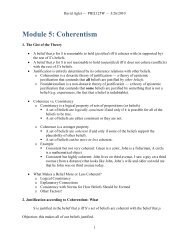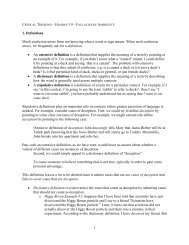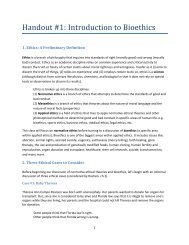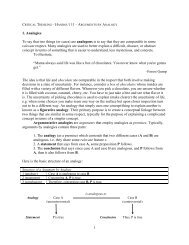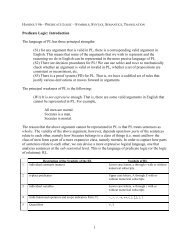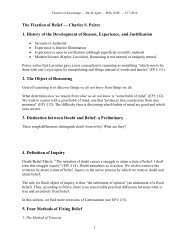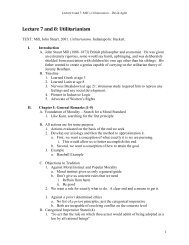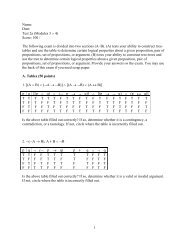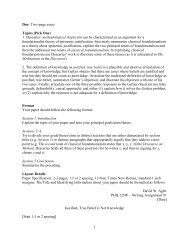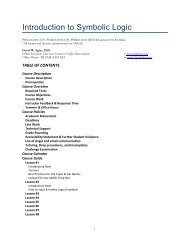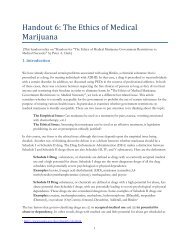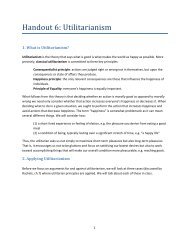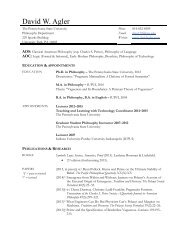9.6 What are possible worlds?The semantics of modal logic may strike you as a useful way of representing the truth <strong>and</strong> falsityof propositions that involve modal terms, but the notion of a possible world raises severalquestions about the status of possible worlds <strong>and</strong> perhaps even cast some doubt on the nature ofmodal logic as a whole. Do possible worlds really exist? If they do, in what sense do they exist?If they don’t, what does this mean for modal logic? How do possible worlds relate to the actualworld?9.6.1 <strong>Modal</strong> Realism: Possible worlds exist as concrete objects9.6.2 <strong>Modal</strong> Actualism: Possible worlds are abstract entities, they don’t really exist9.6.3 Meinongianism: Possible worlds are non-existent objectsExercise Set #51.2.3.4.5.6.7.8.9.10.16
<strong>Chapter</strong> 10<strong>Modal</strong> Logic TreesIn chapters 4 <strong>and</strong> 7, truth trees were used to represent various semantic properties ofpropositions, sets of propositions, <strong>and</strong> arguments. Truth trees, much like truth-tables, are aneffective decision procedure for propositional logic <strong>and</strong> a partial-decision procedure for predicatelogic. In this chapter, the truth-tree method is formulated for modal logic.but it will also allow for us to test propositions, sets of propositions, <strong>and</strong> arguments for variouslogical properties (consistency, contingency, validity, etc.).10.1. <strong>Modal</strong> Logic Tree Setup <strong>and</strong> RepresentationPropositional modal logic trees (hereafter modal trees) are setup in the same way that truth treesare in propositional logic. In terms of decomposition, as ML is an extension of PL, propositionalmodal logic trees extend the truth-tree method from propositional logic. Thus, many propositionswill be decomposed using the propositional logic decomposition rules. For example, “P∧R” willbe decomposed using ∧D.However, one difference between the propositional <strong>and</strong> modal trees is that the truth ofevery proposition in a modal tree is relative to a world. In order to indicate this, we write w witha subscripted integer so as to specify which world that particular proposition is being evaluatedat.<strong>Modal</strong> Logic Tree1 ¬[P→¬(P∨Q)], w 0 P2 ¬P, w 0 1 ¬→D3 ¬(P∨Q), w 0 1 ¬→D4 ¬P, w 0 3 ¬∨D5 ¬Q, w 0 3 ¬∨DHowever, to simplify, we will abbreviate our notation by using positive integers <strong>and</strong> droppingthe use of w at each line. Thus, the modal tree above can be simplified as follows:1 ¬[P→¬(P∨Q)], 0 P2 ¬P, 0 1 ¬→D3 ¬(P∨Q), 0 1 ¬→D17



